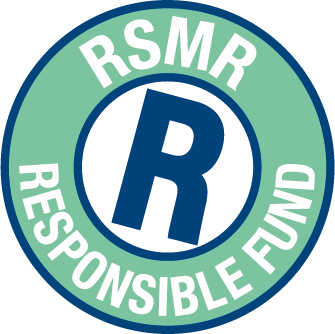Adoption of Sustainability Focus™ label and prospectus disclosure updates
Please note that with effect from 15 April 2025 the Fund will adopt the Sustainability Focus™ label.
Quarterly Update
Watch the investment team recap this quarter.
(Note: Filmed in April 2025).
DEFINING CHARACTERISTICS OF OUR STRATEGY
 Established strategy built on a 30-year history of sustainable investing and innovative thought leadership
Established strategy built on a 30-year history of sustainable investing and innovative thought leadership- High-conviction portfolio of companies selected for their potential to deliver compounding growth and their ability to contribute to the development of a more sustainable global economy
- Committed to provide clients with high standards of engagement, transparency and measurement
KEY DOCUMENTS
Investment
Principles

Annual ESG, Sustainability and Climate Report

Quarterly ESG, Sustainability and Climate Report

INVESTMENT OBJECTIVE
The Fund aims to provide capital growth over the long term (5 years or more) by investing in companies that the Investment Manager believes contribute to positive environmental or social change by reference to the sustainability themes. The Investment Manager has identified nine environmental and social sustainability themes that it believes will help drive a sustainable global economy by addressing current global challenges such as population growth, ageing population, resource constraints and climate change. The Investment Manager will invest in companies whose products and/or services are aligned with the sustainability themes.
More
The Fund invests at least 70% of its assets in shares (also known as equities) of companies, of any size, in any industry and in any country, provided that such companies are not excluded by virtue of the applicable exclusions and meet the Fund’s sustainability standard. Whether a company provides sustainable products and/or services, and therefore whether it is a sustainable company for this Fund, will be determined by a robust evidence-based standard, which requires the majority of each company’s current revenues (at least 50%) to be aligned to a single sustainability theme.
The Fund may also invest in other assets including: (a) companies that have less than 50% revenues aligned to the sustainability themes or have revenues which the Investment Manager considers as enhancing quality of life and which are not considered to conflict with the sustainability themes: (b) companies that derive at least 50% of prospective revenues from products and services that contribute to positive environmental or social change; (c) Collective Investment Schemes (including those managed by Janus Henderson); and (d) cash.
The Investment Manager may use derivatives (complex financial instruments) to reduce risk or to manage the Fund more efficiently.
The Fund is actively managed with reference to the MSCI World Index. The index represents the most appropriate and useful comparator for assessing the Fund's performance because there is a high degree of overlap between the constituents of the index and the initial investible universe of the Fund, but the index does not define the Fund’s investment universe. The Investment Manager has discretion to choose investments for the Fund that are not in the index or with weightings that are different compared to the index. As an additional means of assessing the performance of the Fund, the IA Global sector average, which is based on a peer group of broadly similar funds, may also provide a useful comparator.
Less
The value of an investment and the income from it can fall as well as rise as a result of market and currency fluctuations and you may not get back the amount originally invested.
Potential investors must read the prospectus, and where relevant, the key investor information document before investing.
This website is a Marketing Communication and does not qualify as an investment recommendation.
.
RATINGS AND AWARDS









